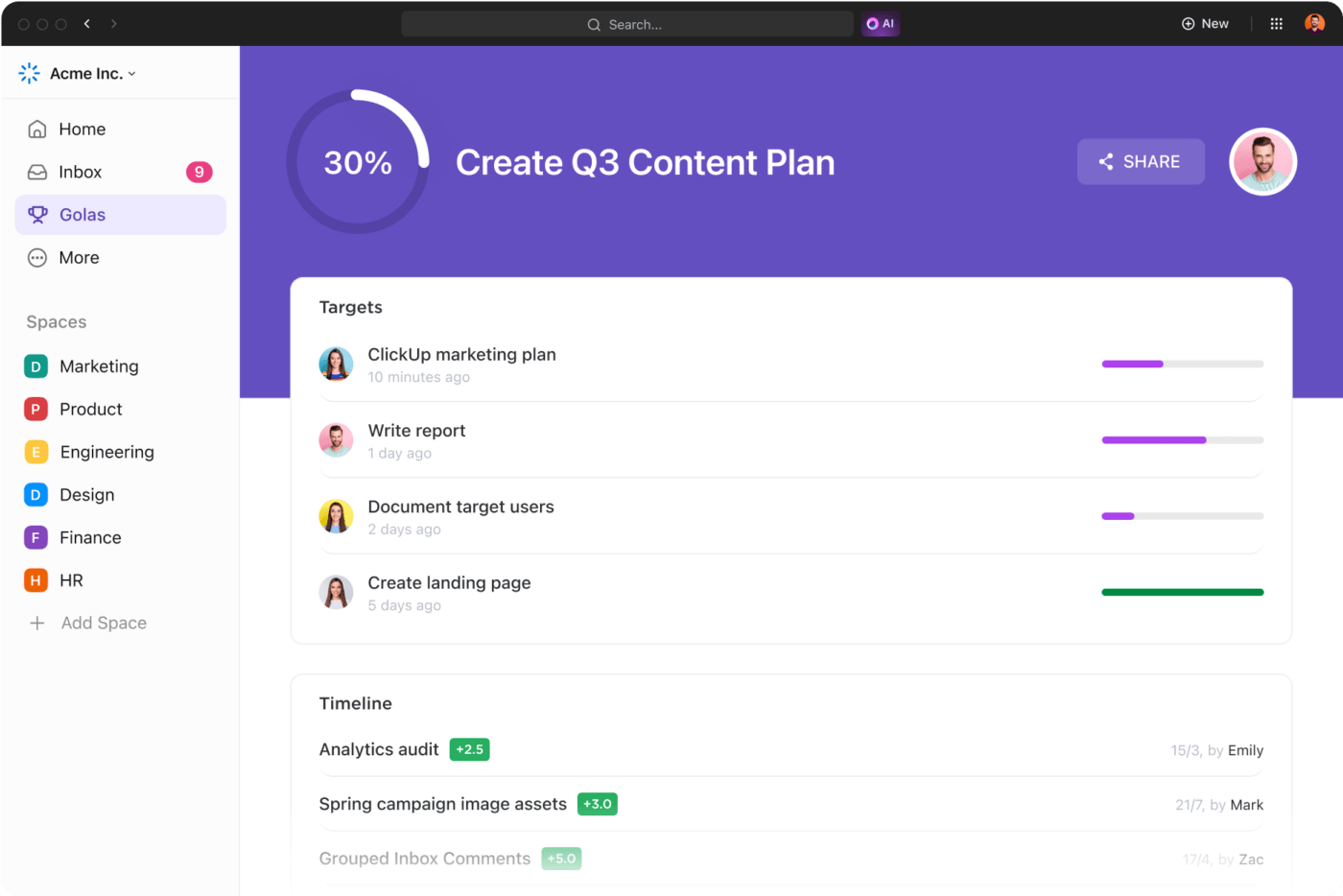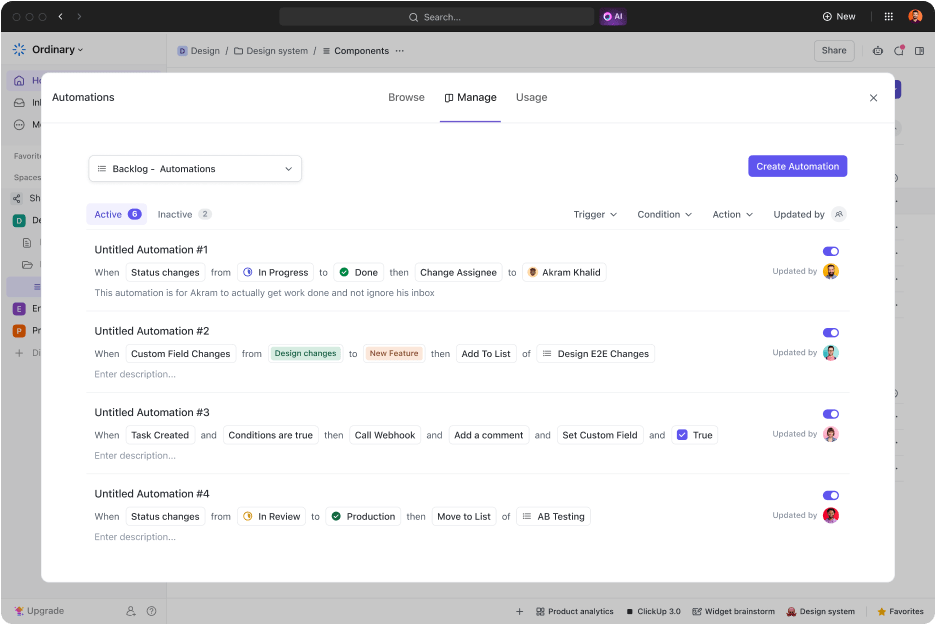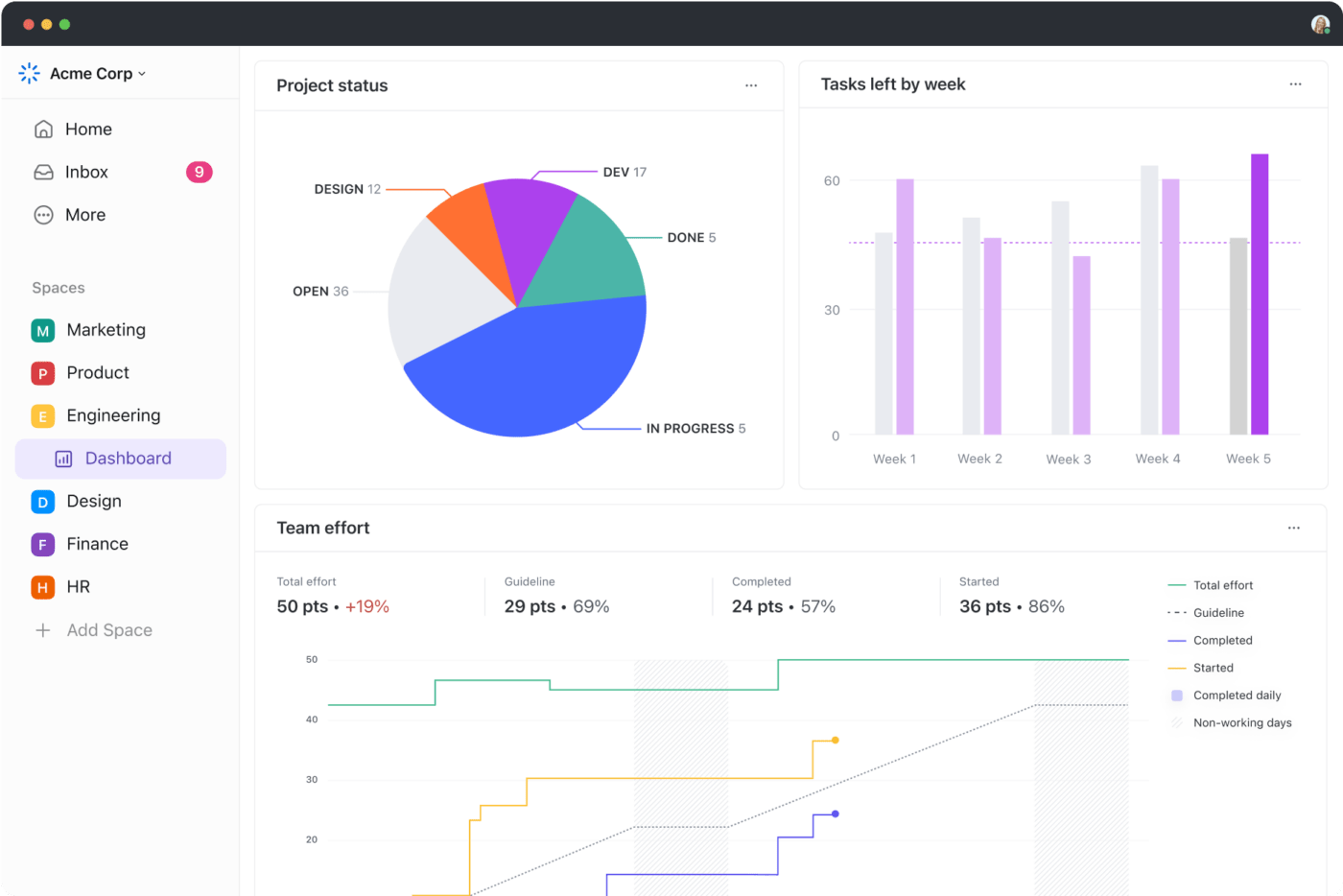Decoding DevOps Goals & Objectives for Software Development Teams

Sorry, there were no results found for “”
Sorry, there were no results found for “”
Sorry, there were no results found for “”
From its beginning as a niche idea, DevOps has evolved today into a key part of a modern IT strategy.
In the past decade or so, it has created a cultural shift that emphasizes collaboration, efficiency, and the continuous integration of IT operations. This approach relies on rapid feedback loops to deliver features, updates, and fixes frequently.
As the name suggests, DevOps brings together ‘development’ and ‘operations’ to create a seamless approach; it’s a game-changer for software development.
For IT professionals, project managers, and business leaders, adopting DevOps means following a philosophy that accelerates delivery and improves the quality of the end product.
In this blog, we’ll explore the realm of DevOps goals and objectives, and how it changes how organizations work. Read on!
DevOps is a method that blends software development (Dev) with IT operations (Ops) to speed up the system development process and ensure continuous delivery of high-quality software.
DevOps is for IT professionals, developers, project managers, and business leaders who want to improve the speed and quality of their software development and operations. It’s beneficial for any organization that needs to frequently update its software and services, especially in a competitive market.
By integrating development and operations, DevOps leads to faster development cycles, increased deployment frequency, and more dependable releases that are in line with business objectives. This collaboration speeds up the software delivery and leads to quicker problem resolution.
DevOps addresses the disconnect between software developers and IT operations teams. Traditionally, developers want to release new features quickly, while operations teams focus on stability.
Some of the primary DevOps methodologies include:
In the DevOps vs. Agile comparison, it’s clear that while Agile optimizes the development phase, DevOps integrates this with operations to enhance the software delivery lifecycle.
Moreover, DevOps champions cultural change, urging you to break down silos between departments. It helps create an environment where teams thrive through shared responsibilities and goals.
By automating repetitive tasks, you let your teams focus on what they do best—innovating and solving complex problems. This ensures that you can deploy updates more frequently and with fewer errors, directly addressing the operational challenges that can bog down your progress.
DevOps aims to improve the efficiency of the software development process. Having said that, you need to set DevOps goals and objectives specific to your organization in order to remain efficient and competitive. These goals will help you drive technological advancements and foster an environment of continuous improvement.
Here are the core goals that every effective DevOps strategy aims to achieve:
Setting clear DevOps goals and objectives is crucial for streamlining your operations and enhancing product delivery.
Here are ten examples of DevOps goals that advance your technical capabilities and align closely with your strategic business needs:
Encourage your development, operations, and even quality assurance teams to work closely together. This integration creates a culture of transparency and shared responsibility, which is essential for quick decision-making and problem-solving.
Streamline the entire development process to deliver products faster. This helps you meet market demands more swiftly and maintain a competitive edge by responding to customer needs and feedback promptly.
Aim to deploy more frequently. Regular deployments are a hallmark of a mature DevOps environment, allowing your team to address bugs and introduce new features quickly.
Utilize CI/CD pipelines to automate your software’s building, testing, and deployment. This ensures that your software is always in a deployable state and that your release process is as efficient as possible.
Adopt automated testing and continuous feedback loops to enhance the quality of the final product. This reduces the incidence of bugs and improves user satisfaction.
Using practices like monitoring, logging, and proactive issue resolution can make your applications more robust and less prone to failure. This stability is crucial for maintaining trust with your customers.
Use cloud technologies and scalable infrastructure to optimize resource allocation. This cuts costs and improves the scalability and performance of your applications.
Create an environment where new ideas are encouraged and tested. DevOps supports a culture of continuous experimentation, allowing your team to innovate without the fear of failure.
Integrate security practices into the software development lifecycle. By doing so, you can address vulnerabilities early, thus minimizing risks to your software and business.
Focus on continuously improving the end-user experience by regularly updating the software with new features and fixes. This direct response to user feedback keeps your product relevant and user-focused.
Implementing and tracking DevOps goals can transform how your organization develops and delivers software.
Here’s how you can implement and track DevOps goals and objectives:
While traditional operations teams spend over 7 hours per week on communication, adopting DevOps can significantly reduce this time.
In fact, with DevOps practices in place, teams spend 60% less time handling support cases, streamlining communication and enhancing productivity across the board. Here are a few best practices to ensure smooth DevOps adoption in your organization.
Ensure that everyone, from top management to frontline IT staff, grasps the core principles of DevOps. Consider organizing seminars or bringing in experts to discuss how DevOps can streamline operations and enhance delivery speeds. This foundational knowledge will help set the right expectations and create a unified vision.
Investing in training is essential to equip your team with the necessary skills for a successful DevOps transition. Schedule regular workshops and hands-on training sessions to familiarize your team with DevOps tools and practices. This will help overcome the learning curve associated with new technologies and methodologies.
Start small. Implement DevOps practices in smaller, less critical projects before applying them to larger scales.
This approach allows your team to gain confidence and iron out any kinks in the process without risking major disruptions. Success in these initial projects builds trust and demonstrates the tangible benefits of DevOps, making the case for wider adoption.
Having the right set of tools is pivotal for effectively implementing DevOps. Tools for continuous integration, continuous deployment, and automated testing are particularly important.
These tools automate routine tasks, reduce errors, and allow your team to focus more on strategic work. Make sure these tools are integrated into your development environment to support these new processes seamlessly.
For the successful adoption of DevOps, you might have to overcome certain hurdles. Here, we break down five common challenges and provide solutions to help you navigate them effectively:
How to overcome: Combat resistance by clearly articulating the benefits of DevOps to all team members. Highlight improvements in efficiency, job satisfaction, and end-product quality that DevOps can bring to each role. Enlist the support of a few key stakeholders to champion the cause with you
How to overcome: Invest in training and upskilling your current workforce. Consider hiring or consulting with DevOps experts who can provide mentorship and transfer essential skills to your team.
How to overcome: Start with selecting tools that integrate well with your existing systems and are widely supported. Use professional services or community support to help integrate complex tools without disrupting current processes.
How to overcome: Foster a culture of collaboration by reorganizing teams to encourage cross-departmental interaction and shared responsibilities. Implement tools and practices that promote communication and visibility across departments.
How to overcome: Implement automated testing and continuous monitoring to ensure immediate feedback on issues. This improves product quality and instills confidence in the deployment process among the team.
By addressing these challenges head-on with structured solutions, you ensure a smoother transition to DevOps practices, setting your organization up for long-term success.
Collaboration and cross-functional teams are central to the success of DevOps.
When developers, operations staff, and quality assurance personnel work together, it bridges gaps in skills and understanding, enhancing both innovation and problem-solving. Here are a few things you must remember about collaboration in DevOps:
ClickUp project management software significantly enhances how teams collaborate, plan, and execute projects.
By integrating all aspects of DevOps project management—tasks, docs, goals, and dashboards—ClickUp provides a unified solution that drives efficiency and ensures that everyone is aligned with the organization’s objectives.
Additionally, ClickUp offers development plan templates that further streamline project management, providing structured frameworks that teams can customize to suit their specific project needs and accelerate the planning process.

The ClickUp Company OKRs and Goals Template is ideal for aligning team efforts through detailed tracking of objectives. It features custom statuses, fields, and various views to manage OKR activities efficiently.
The ClickUp Software Project Management Advanced Template supports meticulous planning for complex software projects.
This template includes Gantt charts, multiple milestones, and comprehensive task tracking to ensure smooth project progression, integrating Agile scrum methodologies for enhanced agility



DevOps is an expansive approach that integrates various disciplines and practices to streamline the development, delivery, and maintenance of software. Here’s how different entities contribute to its effectiveness:
Quality assurance (QA) and software testing are pivotal in DevOps, ensuring that every release meets the highest standards of quality. In a DevOps environment, QA is integrated into the daily workflow rather than being a separate phase.
This integration helps catch issues early and reduces the cost of fixing bugs. Software as a Service (SaaS) platforms benefit greatly from DevOps practices, as continuous testing and QA ensure reliable, scalable, and continuously improving services.
Continuous delivery (CD) and the Systems Development Life Cycle (SDLC) are central to DevOps methodologies. CD automates the delivery of applications to production via automated testing, which ensures that the software can be reliably released at any time.
This automation is integrated into the SDLC, which in DevOps is often characterized by short development cycles and frequent updates. This allows teams to respond quickly to market changes and user feedback.
Agile software development practices underpin the collaborative and iterative approach of DevOps. By breaking down the development process into manageable units, Agile allows for frequent reassessment of a project’s direction.
This flexibility is complemented by reliability engineering, which focuses on ensuring the software performs consistently under varied conditions, thereby supporting DevOps goals of stability and high performance.
Effective project management is crucial in coordinating the many moving parts of DevOps practices. It ensures that all activities, from coding to deployment, are aligned with the broader business objectives.
The software release life cycle in DevOps is markedly faster and more iterative than in traditional software development. It emphasizes rapid releases and frequent feedback loops that allow for continual adjustments.
Test automation in DevOps reduces the manual burden on teams, allowing for quicker software revisions and updates. This rapid testing phase is crucial for maintaining the pace of continuous delivery.
Meanwhile, computer security in DevOps—often referred to as DevSecOps—integrates security measures from the outset of software development, ensuring that security considerations are embedded within the code and not just added at the end.
DevOps revolutionizes how you develop, deliver, and maintain software by emphasizing collaboration, efficiency, and innovation. Its integration of continuous delivery, automated testing, and security ensures that software meets quality standards quickly and adapts rapidly to changing demands.
As you look ahead, the trajectory of DevOps is set to further entwine with advancements in AI, machine learning, and cloud computing, enhancing its capacity to handle complex projects more efficiently.
ClickUp’s all-in-one Software simplifies the entire development lifecycle, providing a central platform that enhances cross-functional teamwork, tools, and knowledge integration. Whether you’re planning roadmaps, managing sprint backlogs, or tracking real-time progress with agile dashboards, ClickUp facilitates seamless collaboration on every aspect of product development.
With ClickUp, teams can ship software faster and more efficiently, ensuring that everyone, from engineers to product managers, is aligned and focused on delivering exceptional products.
Sign up on ClickUp to start optimizing your DevOps strategy today!
The primary goal of DevOps is to unify software development (Dev) and IT operations (Ops), enhancing collaboration and efficiency across the entire development process. This approach aims to shorten the development lifecycle, improve deployment frequency, and ensure continuous delivery, enabling teams to respond more swiftly to customer needs and market changes.
DevOps aims to bridge the gap between development and operations teams, fostering a collaborative environment that accelerates the software development process. It emphasizes continuous integration, continuous deployment, and automated testing to enhance software quality and operational reliability, thereby improving both the speed and security of software releases.
To set DevOps goals, begin by identifying key performance indicators (KPIs) that align with your business objectives, such as deployment frequency or mean time to recovery. Incorporate feedback loops to assess these metrics continuously. Then, leverage DevOps tools and practices like CI/CD and automation to drive these goals, ensuring they promote a collaborative culture and a robust deployment pipeline.
© 2025 ClickUp